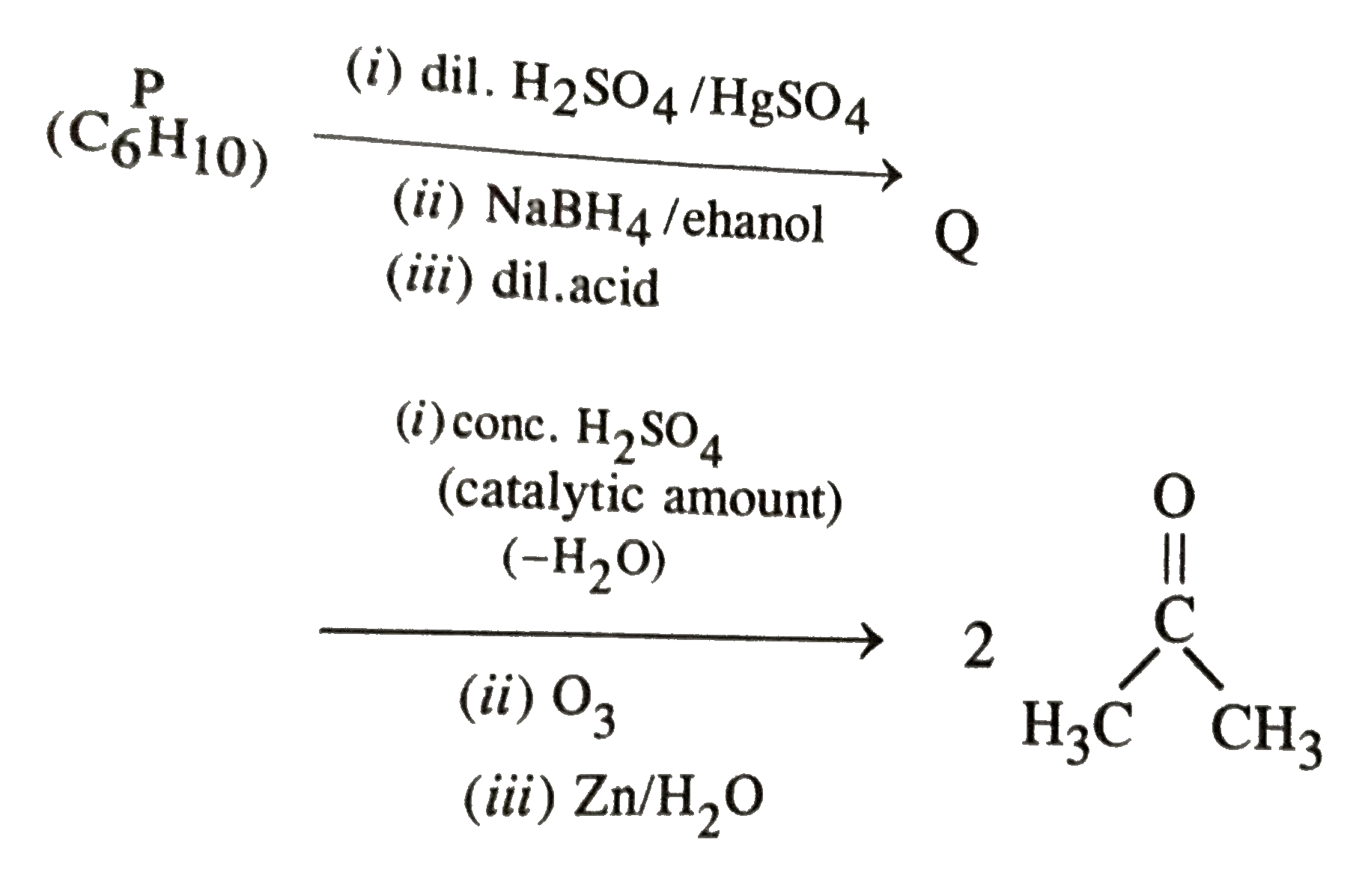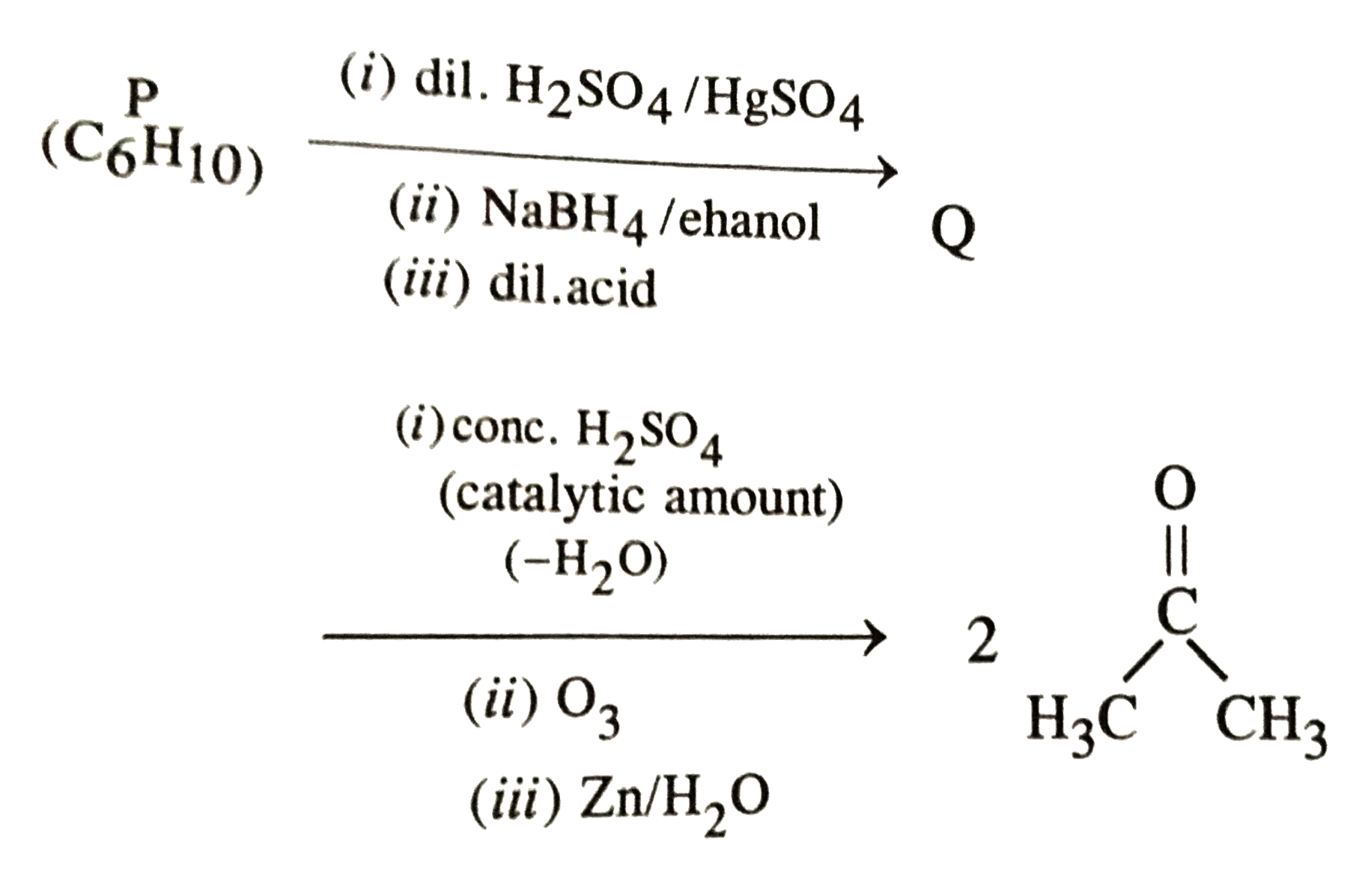Complete Solutions to Section - III (Paragraph type) of chapter JEE ADVANCED of Class 12 book with complete answers and questions
| Class 12 | CHEMISTRY |
| Chapter | JEE ADVANCED |
| JEE ADVANCED | Section - III (Paragraph type) |
| Number Of Questions | 10 |
| Academic Year | 2023-24 |
Copper is the most noble of first row transition metals and occurs in small deposits in serveral countries. Ores of copper include chalcanthite `(CuSO_(4).5H_(2)O)`, atacanite `[Cu_(2)Cl(OH)_(3)]`, cuprite `(Cu_(2)O)`, copper glance `(Cu_(2)S)`, and malachite `[Cu_(2)(OH)_(2)CO_(3)]`. However, `80 %` of the world copper production comes from the ore chalcopyrite `(CuFeS_(2))`. The extraction of copper from chalcopyrite involves partial roasting, removal of iron and self-reduction.
Partial roasting of chalcopyrite produces
View SolutionCopper is the most noble of first row transition metals and occurs in small deposits in serveral countries. Ores of copper include chalcanthite `(CuSO_(4).5H_(2)O)`, atacanite `[Cu_(2)Cl(OH)_(3)]`, cuprite `(Cu_(2)O)`, copper glance `(Cu_(2)S)`, and malachite `[Cu_(2)(OH)_(2)CO_(3)]`. However, `80 %` of the world copper production comes from the ore chalcopyrite `(CuFeS_(2))`. The extraction of copper from chalcopyrite involves partial roasting, removal of iron and self-reduction.
Iron is removed from chalcopyrite as.
View SolutionCopper is the most noble of first row transition metals and occurs in small deposits in serveral countries. Ores of copper include chalcanthite `(CuSO_(4).5H_(2)O)`, atacanite `[Cu_(2)Cl(OH)_(3)]`, cuprite `(Cu_(2)O)`, copper glance `(Cu_(2)S)`, and malachite `[Cu_(2)(OH)_(2)CO_(3)]`. However, `80 %` of the world copper production comes from the ore chalcopyrite `(CuFeS_(2))`. The extraction of copper from chalcopyrite involves partial roasting, removal of iron and self-reduction.
In self-reduction, the reducing species is.
View SolutionThe concentration of potassium ions inside a biological cell is at least 20 times higher than outside. The resulting potential difference across the cell is important in several processes such as transmission of nerve impulses and maintaining the ion balance. A simplel model for a concentration cell involving a metal `M` is
`M(s)|M^(o+)(aq,0.05 ` molar`)||M^(o+)(aq,1` molar`)|M(s)`
For the abov electrolytic cell, the magnitude of the cell potential is `|E_(cell)|=70mV.`
For the above cell
View SolutionCopper is the most noble of the first row transition metals and occurs in small deposits in several countries. Ores of copper include chalcanthite `(CuSO_(4).5H_(2)O)` atacamite `(Cu_(2)Cl(OH)_(3))`,Cuprite `(Cu_(2)O)` , copper glance `(Cu_(2)S)` and malachite `(Cu_(2)(OH)_(2)CO_(3))`. however 80% of the world copper production comes from the ore chalcopyrite `(CuFeS_2)`. the extraction of copper from chalcopyrite invovles partial roasting . removal of iron and self-reduction.
IF the 0.05 molar solution of `M^(+)` is replaced by a 0.0025 molar `M^(+)` solution. then the magnitude of the cell potential would be
View SolutionWhen a metal rod M is dipped into an aqueous colourless concentrated solution of compound N, the solution turns light blue. Addition of aqueous `NaCl` to the blue solution gives a white precipitate O. Addition of aqueous `NH_(3)` dissolves O and gives an intense blue solution.
The metal rod M is
View SolutionWhen a metal rod M is dipped into an aqueous colourless concentrated solution of compound N, the solution turns light blue. Addition of aqueous `NaCl` to the blue solution gives a white precipitate O. Addition of aqueous `NH_(3)` dissolves O and gives an intense blue solution.
The compound N is
View SolutionWhen a metal rod M is dipped into an aqueous colourless concetrated solution of compound N, the solution turns light blue. Addition of aqueous NaCl to the blue solution gives a white precipitate O. Addition of aqueous `NH_3` dissolves O and gives an intense blue solution.
Q. The final solution contains.
View SolutionAn acyclic hydrocarbon P, having molecular fromula `C_(6)H_(10)` gave acetone as the only organic product through the followig sequence of reaction in which Q is an intermediate organicn compound

The structure of compound P is
View SolutionAn acyclic hydrocarbon P, having molecular fromula `C_(6)H_(10)` gave acetone as the only organic product through the followig sequence of reaction in which Q is an intermediate organicn compound

The structure of the compound Q is
View Solution
Section - III (Paragraph type) questions and complete solutions for chapter JEE ADVANCED of JEE ADVANCED PREVIOUS YEAR of Class 12
All Exercises from JEE ADVANCED Class 12 CHEMISTRY JEE ADVANCED
- CHEMISTRY
- CHEMISTRY SECTION - I : Single correct Answer Type
- CHEMISTRY SECTION - II : Multiple Correct Answer Type
- CHEMISTRY SECTION - III : Integer Answer Type
- CHEMISTRY SECTION - IV : Matric Match Type
- MULTIPLE CHOICE QUESTIONS
- PART II : CHEMISTRY (SECTION -1)
- PART II : CHEMISTRY (SECTION -2)
- PART II : CHEMISTRY (SECTION -3)
- PART II : CHEMISTRY (SECTION 1)
- PART II : CHEMISTRY (SECTION 2)
- PART II : CHEMISTRY (SECTION 3)
- PART II :CHEMISTRY (SECTION 2)
- PART II :CHEMISTRY (SECTION 3)
- PART II: CHEMISTRY (Section -1):(One or more options correct type)
- PART II: CHEMISTRY (Section -2):(Paragraph Type)
- Part II: CHEMISTRY (Section 1)
- Part II: CHEMISTRY (Section 2)
- Part II: CHEMISTRY (Section 3) Paragraph 1
- Part II: CHEMISTRY (Section 3) Paragraph 2
- PART II: CHEMISTRY Section-3:(Matching List Type)
- PART-2 CHEMISTRY SECTION -1 (ONLY ONE OPTION CORRECT TYPE)
- SECTION - 3 (MATCHING LIST TYPE)
- Section - I Single correct Answer Type
- Section - I (Single correct question )
- Section - II (Multiple correct Answer Type Questions)
- Section - II (Multiple correct choice type)
- Section - III (Paragraph type)
- Section - IV (Integer Answer Type)
- SECTION -2 COMPREHENSION TYPE
- SECTION 1
- SECTION 2
- SECTION 3 PARAGRAPH
- SECTION I
- Section I : Single Correct Answer Type
- SECTION II
- Section II : Paragraph Type
- SECTION III
- Section III : Multiple Correct Answer(s) Type
- SECTION- 1 (ONE OR MORE THAN ONE OPTIONS CORRET TYPE)
- Section-1
- Section-2
- Section-3
- SECTION-I (Single Correct Choice Type )
- Section-I (single correct choice type)
- Section-II (Integer type)
- SECTION-II (Multiple Correct Choice Type )
- SECTION-II(Multiple Correct Choice Type )
- Section-III (Paragraph type )
- SECTION-III (Comprehension Type )
- SECTION-III (Matrix-Match Type )
- SECTION-IV (Integer Answer Type )
- Section-IV (integer type)
- Section-IV (Matrix type)
- SECTION-IV(Matrix-Match Type )